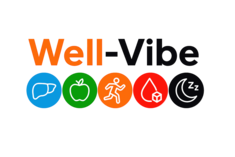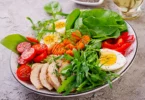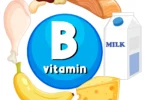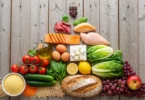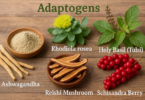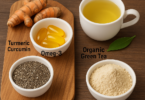I was in my doctor’s office anticipating a routine visit. Instead, I was greeted with words that brought me to a standstill: “You have fatty liver disease.” I was lost in thought, wondering how this was possible. What about the Saturday-night beers with the guys? The pizza evenings with the kids? I recognized that I had to watch my food to avoid fatty liver.
The reality struck home: the fatty liver foods I’d eaten without hesitation had silently done their damage. But the good news is that strategic changes can not only stop fatty liver disease from getting worse, but also reverse it. According to research, the correct dietary changes can decrease liver fat by as much as 40% in six months, allowing the liver to heal and regenerate.
I started to make a list of foods to avoid for fatty liver and replace them by adding foods that nourish the liver with antioxidants, fiber, and healthy fats provides a solid starting point for recovery. From colorful Mediterranean-style dishes to minor breakfast tweaks, these diet changes offer rewards well beyond the liver, such as enhanced energy, more sound sleep, and reduced inflammation in the entire body
Healing From Fatty Liver Through Regular Fitness

When I initially began to address my fatty liver diagnosis, I thought diet was where the only action would take place. I was more mistaken. Integrating a routine of regular physical activity changed the way I approached recovery in ways I had not even begun to imagine.
Studies conducted in the Journal of Hepatology reveal that proper nutrition coupled with moderate physical activity can decrease the fat content of the liver by as much as 60% over diet changes alone.
Even slight activity such as a 30-minute daily walk initiates metabolic activity that enables the liver to metabolize fat more effectively. The best part of exercising is the fact that there is no need for rigorous gym sessions to reap rewards. Doing things you really enjoy changes the way you see exercise as a duty to a pleasure, which ultimately develops habits that help nourish the liver over the years.
Foods That Your Liver Loves
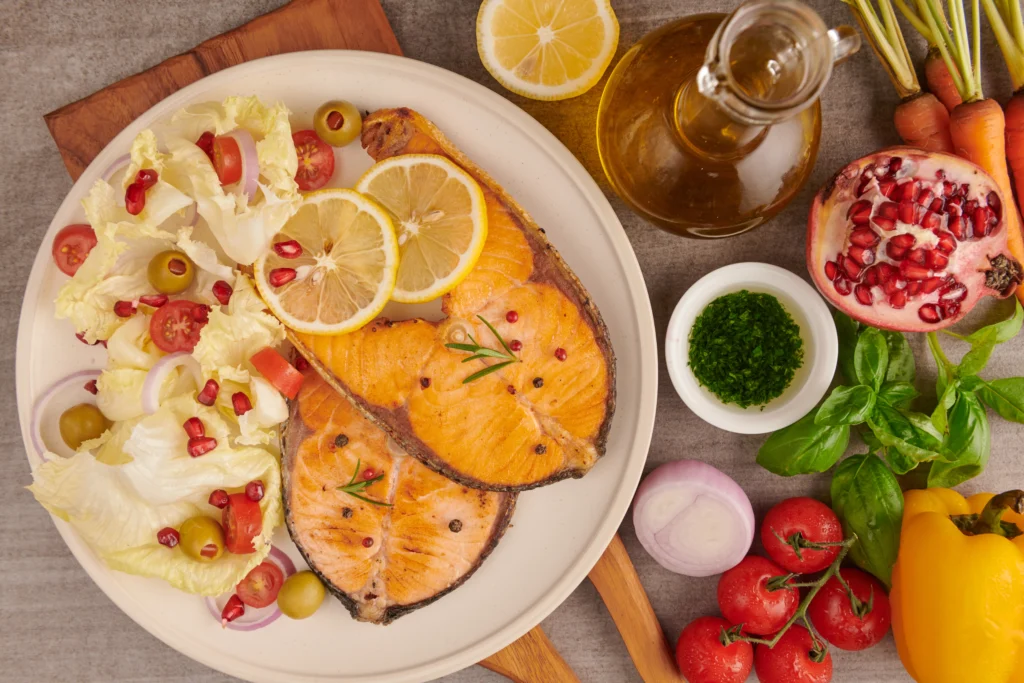
Let’s cut to the chase: Which foods should be featured in your healthy meals for fatty liver recovery? Here’s your liver-loving grocery list to create nourishing dishes that heal:
- Olive oil – Replace butter and vegetable oils with this Mediterranean staple rich in healthy monounsaturated fats
- Fatty fish (salmon, mackerel, sardines) – Packed with omega-3s that fight inflammation
- Nuts and seeds – Walnuts and flaxseeds particularly shine for liver health
- Avocados – Nature’s perfect package of healthy fats and fiber
According to research from Harvard Medical School, these foods don’t just avoid harming your liver; they actively support its healing process
Rainforest Plant Champions
The colorful hues of fruits and vegetables indicate active compounds which promote the functioning of the liver:
- Berries – Blueberries, strawberries, and raspberries contain powerful antioxidants
- Leafy greens – Spinach, kale, and arugula contain chlorophyll that supports liver cleansing
- Cruciferous vegetables – Broccoli, cauliflower, and Brussels sprouts include compounds that increase the production of enzymes
- Garlic and onions – These flavorful powerhouses stimulate liver enzymes that eliminate toxins
A study in the World Journal of Gastroenterology found that these plant foods contain compounds that can help reduce fat accumulation in the liver and improve enzyme levels.
Foods to Approach with Caution
It is important to understand which foods to avoid for fatty liver in order to heal. The key to improvement when I was diagnosed was to identify these harmful culprits and remove them from the diet:
Sugar and Sweetened Products
- Sodas and fruit juices – Even “natural” juices can contain as much sugar as soda, delivering a concentrated hit to your liver
- Breakfast cereals – Many contain hidden sugars equivalent to desserts
- Flavored yogurts – Can pack more sugar than ice cream; opt for plain versions and add fresh fruit
- Condiments – Ketchup, barbecue sauce, and salad dressings often hide surprising amounts of added sugars
A systematic review in the Journal of Hepatology found that high fructose consumption increases liver fat and inflammation even more than other sugars. Try reading labels for terms like “corn syrup,” “dextrose,” and “sucrose” all indicators of added sugars.
Refined carbohydrates
- White bread and pasta – Quickly convert to sugar, which accumulates in the liver
- Packaged snack foods – Crackers, chips, and pretzels raise blood sugar levels
- White rice – Select the brown, wild, or black rice options for added fiber and nutrients
- Pastries and baked foods – Pair refined carbs with unhealthy fats to create a double load for the liver
When I switched to whole grain alternatives, I noticed improved energy levels within just weeks. Research shows whole grains improve insulin sensitivity, directly benefiting liver health.
Unhealthy Fats
- Trans fats – Present in most processed foods and have a direct association with liver inflammation
- Fried foods – The heat from the food stresses the liver with compounds
- Red meat fatty cuts – Restrict to infrequent use or opt for lean portions
- Full-fat dairy foods – Try using vegetable-based alternatives or reduced-fat versions
Researchers at the University of California concluded that saturated fat induces more inflammation in liver cells than other fats. Look on food labels for “partially hydrogenated oils” – a giveaway for trans fats, even if the package states “0g trans fat.”
Alcohol and caffeine use:

- Beer, wine, and liquor – Even moderate drinking is too much for a fatty liver
- Mixed drinks – Blend alcohol with sugar for a particularly troublesome combination
- Excess coffee – Although 1-2 cups can help the liver, excess caffeine can overstrain it
- Energy drinks – Blend caffeine with sugar and additives that can tax the liver
I learned that removing alcohol altogether for three months allowed my liver to take the break that it needed to start healing. Having complete abstinence feels too difficult, try having designated alcohol-free days per week as a beginning point.
Hidden Liver Stressors
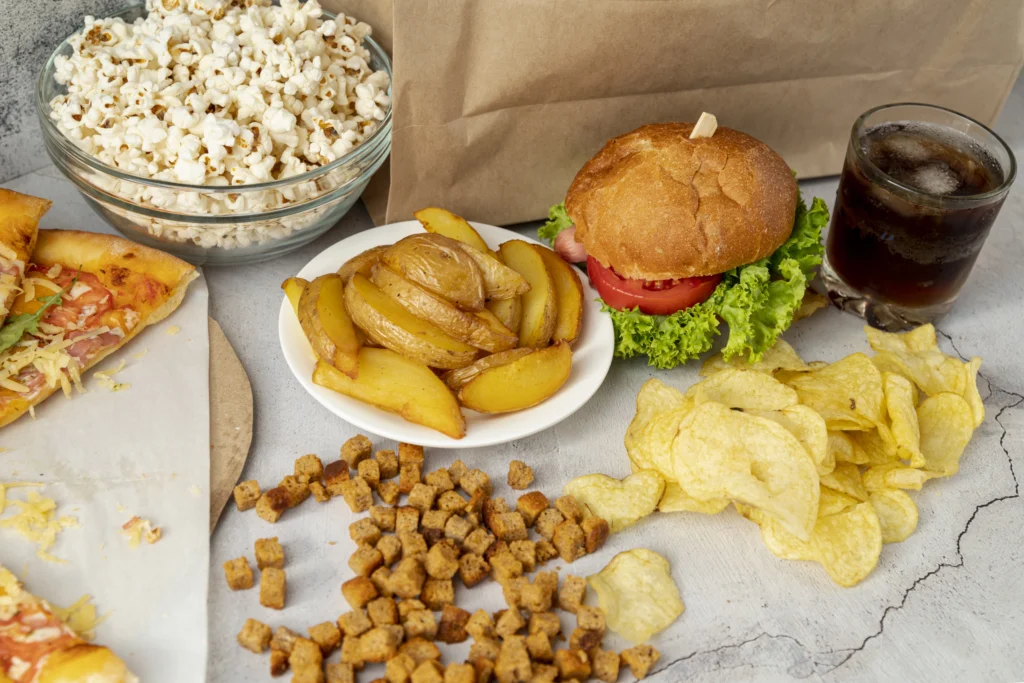
- Processed meats – Sausage, bacon, and deli meats have preservatives and sodium that put a strain on liver function
- Fast foods – Tend to serve a combination of unhealthy ingredients (added sugars, unhealthy fats, refined carbs)
- Artificial sweeteners – They’ve been linked in some studies to changing gut bacteria in a manner that impacts liver function
- Sodium-rich foods – Too much intake of salt produces fluid retention that taxes an already strained liver
According to research published in Hepatology, processed foods containing high fructose corn syrup, refined grains, and added fats create the “perfect storm” for liver fat accumulation
Simple Changes, Positive Impact
The greatest sustainable shifts tend to arise from straightforward substitutes in place of sweeping diet overhauls:
- Swap out your breakfast pastry for oatmeal with berries and nuts
- Replace soda with sparkling water infused with citrus and herbs
- Replace chips with a serving of nuts or with roasted chickpeas
- Opt for dark chocolate rather than milk chocolate as your sweet treat
You can Begin Your Liver Recovery Today
Do you remember the day I was diagnosed? I was overwhelmed, convinced I’d have to change overnight. What I actually needed to do was make tiny, everyday changes that added up to big things for the health of my liver.
With proper support, your liver is an incredibly regenerative organ. Whether you’re maintaining a current fatty liver condition or attempting to prevent one, each liver-supportive meal is a positive step toward well being.
Are you prepared to take charge of your liver health? Begin by incorporating one food that is beneficial to the liver in your daily life this week. Then, address one food to eliminate or decrease next week. These incremental changes make for sustainable change without overtaxing the willpower and taste buds.
With increased energy, improved lab work, and a healthier liver, the future you will appreciate that you started today.
Join our community here for weekly science-backed health tips, free meal plans, and carefully curated product recommendations delivered straight to your inbox!
Disclaimer:
This blog post is for informational purposes only and is not intended as medical advice. Always consult with a qualified healthcare professional before making any changes to your diet, exercise routine, or healthcare plan. The information provided is based on personal research and experience and may not apply to everyone
